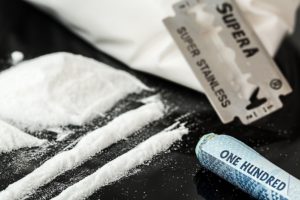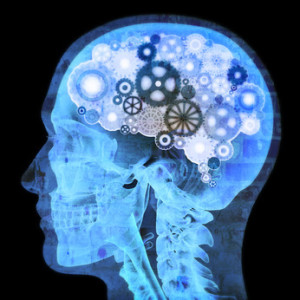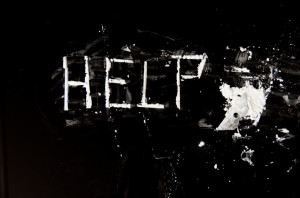What is Cocaine?
 Cocaine is a powerful stimulant that frequently linked to the “party lifestyle” because of its intense high. It is often considered to be an elite recreational drug. Cocaine is a highly addictive stimulant that is extracted from the leaves of the coca plant.
Cocaine is a powerful stimulant that frequently linked to the “party lifestyle” because of its intense high. It is often considered to be an elite recreational drug. Cocaine is a highly addictive stimulant that is extracted from the leaves of the coca plant.
It is normally consumed in one of three ways; smoking, snorting, or injection. Cocaine directly affects the brain and the body’s dopamine receptors which are responsible for the body’s experience of pleasure.
Cocaine abuse creates a buildup of dopamine and results in an influx of pleasure which is a main contributor as to why cocaine is so addictive. There are many street names for the drug, including coke, crack, blow, nose candy and snow. Cocaine is also sometimes combined with alcohol (called a “Liquid Lady”) and sometimes mixed with heroin (called a “Speedball”).
Cocaine Abuse Statistics
According to the National Survey on Drug Use and Health (NSDUH) it is estimated that in 2008 there were 1.9 million current (past-month) cocaine users, of which approximately 359,000 were current crack users. Adults aged 18 to 25 years have a higher rate of current cocaine use than any other age group, with 1.5 percent of young adults reporting past month cocaine use [1].
How to Tell if a Person is Using Cocaine. As posted by: ehowhealth
Other statistics pertaining to cocaine addiction include:
- The United States experienced a decrease in the prevalence of cocaine use among adults (persons aged 15-64), from 3.0 per cent in 2006 to 2.2 per cent in 2010 which can be linked to the decline of 47% in cocaine manufacture in Colombia, where most of the cocaine destined for North America was manufactured during that period. [2].
- It is the most abused stimulant drug in America and recently became the most frequently occurring drug in emergency department visits [3].
- One report showed that cocaine was involved in 482,188 of the nearly 2 million visits to emergency departments for drug misuse or abuse. This translates to almost one in four drug misuse or abuse emergency department visits (24 percent) that involved cocaine [1].
- While men tend to use the drug more often than women, women are more prone to becoming addicted [3].
Causes of Cocaine Addiction
Cocaine addiction is the psychological and emotional desire to continuously use cocaine. While there is no single cause to developing a cocaine addiction, there are multiple contributing factors. Cocaine is seen as a recreational drug, but it is highly addictive. Individuals can first begin to use cocaine because of peer pressure or curiosity. A person can also begin using the drug to try to self medicate a mood disorder such as depression, anxiety, bi-polar disorder, or eating disorders like anorexia or bulimia. Cocaine can also be used to alleviate emotional wounds or escape from the painful feelings of traumatic events such as sexual abuse or physical abuse. There are multiple reasons why people begin to use cocaine. Powerful feelings of euphoria and exhilaration are part of the reason why people become addicted to cocaine. These feelings will peak in 30 minutes and crash after an hour or two. They will also become addicted because of the chemical changes that affect the brain which produces intense cravings for cocaine.
 There is often a co-occurring nature to cocaine abuse. It is frequently used in conjunction with other drugs such as alcohol, heroin, marijuana or sedatives. Mixing these drugs with the cocaine greatly intensifies the high and thus contributes to increasing the addictive nature of cocaine.
There is often a co-occurring nature to cocaine abuse. It is frequently used in conjunction with other drugs such as alcohol, heroin, marijuana or sedatives. Mixing these drugs with the cocaine greatly intensifies the high and thus contributes to increasing the addictive nature of cocaine.
Signs of Cocaine Use, Addiction and Dependence
A person abusing cocaine will exhibit one or several of the following characteristics:
- Dilated pupils
- Increased heart rate
- Strong sense of exhilaration
- Increased elation
- Restlessness
- Increased chattering
Cocaine Effects
There are several side effects caused by using and abusing cocaine. There are both emotional and physical consequences to coke abuse that occur after both short term and long term use. The physical results of using cocaine are very dangerous and include brain damage, seizures, heart attacks, and death. Other physical side effects include:
- Racing heart rate
- Dilated pupils
- Rapid breathing
- Insomnia
- Loss of appetite
- Nose bleeds
- Irregular heart rhythms
- Asthma
Psychological side effects of using cocaine are numerous as well. Prolonged use of cocaine can cause schizophrenia-like symptoms, paranoia, and the user can feel as if they have lost their mind. Since cocaine is highly addictive it can produce intense and immediate cravings for more cocaine thus aiding in quickly establishing an addiction. Other psychological side effects include:
- Depression
- Hallucinations
- Anxiety
- Violent behaviors
- Mood swings
- Irritability
Many of these side effects can last for weeks or months. The cravings for cocaine can last for years.
The abuse of cocaine can have other side effects that go beyond the physical and psychological. There are relational side effects as well. Cocaine addiction can lead to ruined relationships and the loss of the user’s family. The drug addiction can also lead to a demise of financial resources, the termination of a job or career. Being addicted to cocaine can even lead to jail time.
Cocaine Withdrawal
 After a continued cycle of use and abuse, a person will become addicted to cocaine. When a man or woman discontinues abusing cocaine, the user will experience a withdrawal symptom called a “crash” or “come down”. There are a number of cocaine withdrawal symptoms such as exhaustion, anxiety, mood swings, insomnia, the intense craving for more cocaine and irritability just to name a few. Some people in withdrawal say they feel as if bugs were crawling underneath their skin; these sensations are commonly referred to as “coke bugs”.
After a continued cycle of use and abuse, a person will become addicted to cocaine. When a man or woman discontinues abusing cocaine, the user will experience a withdrawal symptom called a “crash” or “come down”. There are a number of cocaine withdrawal symptoms such as exhaustion, anxiety, mood swings, insomnia, the intense craving for more cocaine and irritability just to name a few. Some people in withdrawal say they feel as if bugs were crawling underneath their skin; these sensations are commonly referred to as “coke bugs”.
Cocaine Addiction Treatment
Anyone that has a cocaine addiction needs to get in touch with a cocaine treatment center to get help for the addiction. There are multiple types of cocaine rehab and the most effective cocaine treatment employs several different approaches. As of now, there are no drug therapies that can be used to help cure cocaine addiction. There are some drugs like Modafinil, Bupropion, and Acetylcysteine that are being investigated as cocaine addiction aides, but these drugs have not yet been approved. Cocaine addiction treatment should be approached in a holistic manner including intensive therapy, behavioral therapies and support that leading rehab centers provide. The cocaine treatment program should be personalized for the user and include after treatment support. Overcoming cocaine addiction is very difficult. There will be many hills and valleys. Success will depend on the cocaine treatment center, the cocaine treatment therapist, friends and family, but most of all, the user admitting they have a problem and asking for help.
References
[1]: National Institute on Drug Abuse (NIDA) – www.drugabuse.gov/publications/research-reports/cocaine-abuse-addiction/what-scope-cocaine-use-in-united-states
[2]: United Nations Office on Drugs and Crime – World Drug Report 2012 – http://www.unodc.org/documents/data-and-analysis/WDR2012/WDR_2012_web_small.pdf
[3]: eMedicineHealth – www.emedicinehealth.com/cocaine_abuse/article_em.htm
Articles Related to Cocaine Abuse
- Cocaine is a stimulant, and when abused, it can make those who are shy and withdrawn much more lively. People who are shy and abusing cocaine are often using it as a crutch. Some individuals will use the cocaine to break through their social anxiety. However, these people are at risk of developing an addiction to cocaine.
- With the rise of illicit and street drugs on college campuses, students are facing an unprecedented allure to engage in substance abuse during their academic careers. While students in college have heightened rates of heavy drinking, among other perilous behaviors, not much is known about trends regarding cocaine use among college students.
- Or maybe the holiday season brings with it stress, anxiety, and depression, and your way of coping with these emotions is by numbing yourself with various drugs. Whatever the situation may be, you may find your sobriety challenged by the holidays.

Appreciation to my father who stated to me about this
weblog, this weblog is actually remarkable.